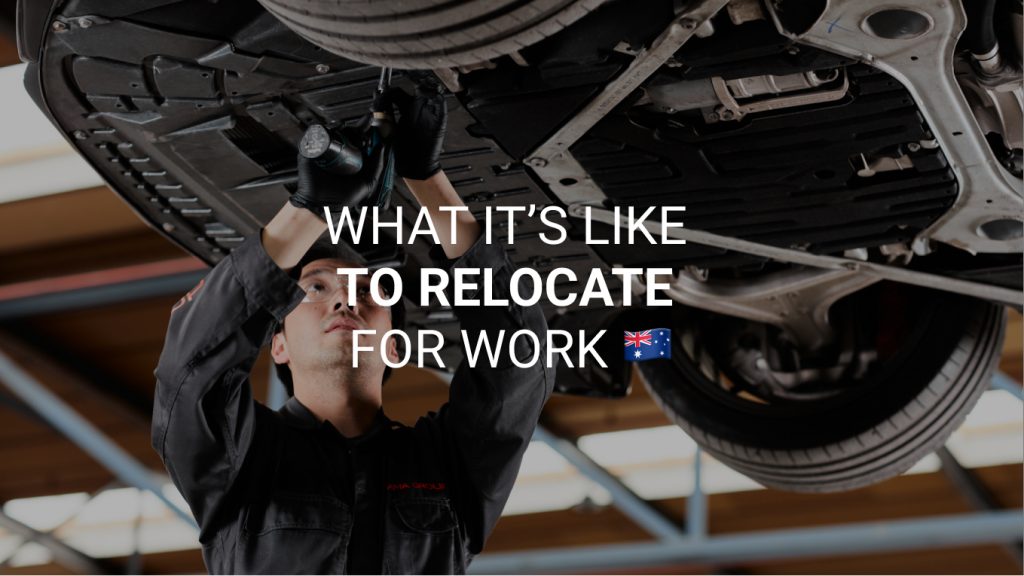Automotive Industry : Diversity of Work Culture in Australia vs UK
 16.10.2025
16.10.2025
 6 mins to read
6 mins to read

Have you ever wondered why so many technicians, panel beaters, and spray painters are choosing to move their careers to Australia? It is not just the sunshine, beaches, or relaxed lifestyle that draw people in. It is the way Australians work. Beneath the laid-back image lies a structured, safety-driven, and employee-focused automotive industry. If you have spent time in a UK body shop or any fast-paced repair center elsewhere, the differences might just surprise you.
This article explores what truly sets Australian automotive workplaces apart: from working hours and overtime to hierarchy, teamwork, and work-life balance. Whether you’re thinking of relocating or simply curious about how the two systems compare, read on to discover how Australia manages to blend efficiency with well-being.
Fair work, fair hours: legal structure and working hours in automotive industry
Australia’s automotive employees are covered by the Fair Work Act 2009 and the National Employment Standards (NES). They cap standard full-time hours at 38 per week, with any extra time considered overtime. Overtime in many bodyshops is paid at 150% of the base rate, unlike in the UK, where rates and conditions vary by contract. Some smaller garages in the UK may even offer unpaid ‘extra time.’ This structure ensures that productivity is rewarded rather than endurance. It is a cultural marker of Australia’s more measured approach to labour.
According to Safe Work Australia, clear rostering, fatigue management, and health-and-safety leadership are mandatory responsibilities of employers in repair facilities. The legal emphasis on prevention and consultation with employees contrasts with the UK model, where safety culture can depend heavily on individual site management.
More than just time off: holidays, leave, and benefits – Australia vs UK
While the NES guarantees four weeks of paid annual leave for full-time workers, large automotive employers typically exceed this minimum. AMA Group with whom we cooperate, for example, offers 30 to 33 days per year depending on state regulations. That is a clear advantage over the UK’s statutory 28 days, including public holidays. Australian staff also benefit from 10–12 public holidays, varying by state or territory, and unused leave usually carries over to the following year.
More in the interview with AMA Group: click
Below is a simplified comparison of entitlements relevant to automotive technicians:
| Employment Aspect | Australia (Automotive sector) | United Kingdom (Automotive sector) |
| Standard week | 38–40 hours | 40 hours average |
| Overtime rate | 150% after 38 hours (bodyshop-specific) | Often 125 % or unpaid depending on contract |
| Annual leave | 30–33 days (incl. public holidays, AMA Group example) | 28 days (incl. bank holidays) |
| Uniform & tools | Usually provided or discounted internally | Often self-funded by technician |
| Relocation support | Airport pickup, temporary housing, mobility within network | Rare outside corporate brands |
These benefits reflect how Australian automotive employers compete for skilled labour: through structured entitlements, modern facilities, and relocation support. These things are less usual in many UK or European workshops.
Work smarter, rest freer: the Australian way to balance career in the automotive
Perhaps the most visible cultural difference lies in work-life balance. In Australia, finishing early on Fridays or scheduling flexible hours around family commitments is widely accepted. Employers emphasise output quality and safety compliance rather than sheer hours spent on the shop floor. This approach mirrors national attitudes toward leisure and well-being, supported by government initiatives such as the proposed ‘right to disconnect’ legislation protecting employees from after-hours work contact. By contrast, UK workshops often inherit an overtime-driven ethos, a legacy of tighter margins and longer repair queues, where technicians are praised for staying late. Australian managers tend to view consistent overwork as a risk to quality and safety rather than a sign of dedication.
The power of equality: diversity of the Aussie workshop culture
Cultural hierarchy is another subtle yet powerful difference. Australian bodyshops are typically less formal and more egalitarian. Technicians address foremen or site managers by first name, and open discussion about workflow or process improvements is encouraged. This aligns with the wider Australian business culture, described by business.gov.au as valuing collaboration, fairness, and diversity in workplaces. In practice, this means that when a painter notices a more efficient way to mix materials or a panel beater spots a safety hazard, they can raise it directly without layers of approval. In the UK, where traditional hierarchies remain more pronounced, change may flow more slowly through formal reporting lines. The Workplace Gender Equality Agency also monitors diversity and inclusion across Australian industries, encouraging automotive companies to maintain equitable pay and advancement pathways. Such public oversight reinforces a culture where respect and openness are part of compliance as well as ethics.
More than a job: why belonging matters down under
Social integration is highly valued. Many repair centres host Friday barbecues or team breakfasts. Furthermore, the mentoring systems help new staff settle in. AMA Group’s onboarding includes airport pick-up and housing assistance. These gestures foster loyalty and ease transition, particularly for interstate hires. The goal is to make technicians feel part of a team rather than temporary labour.
Australia’s emphasis on community and informality does not mean lower standards. Safe Work Australia’s research shows that organisations with inclusive cultures report fewer incidents and higher productivity. The relaxed atmosphere coexists with rigorous attention to repair quality, OEM procedures, and I-CAR certification, which AMA Group and similar employers provide on arrival.
Key findings: what makes the Aussie auto labour market work
When viewed globally, Australia’s automotive workplaces combine strong legal frameworks, competitive benefits, and a cultural focus on balance and collaboration. Where the UK model often reflects legacy hierarchies and high-pressure scheduling, Australia’s approach institutionalises fairness and well-being without sacrificing productivity.
In summary:
- Structure and security – Fair Work laws guarantee clear entitlements; many employers exceed them.
- Balance and compensation – Overtime is paid; non-working hours are respected.
- Egalitarian teamwork – Open communication replaces rigid rank.
- Employee care – Benefits such as uniforms, tools, and relocation aid signal long-term commitment.
- Continuous training – I-CAR and OEM programmes are integrated into employment, supporting quality and mobility.
These cultural and structural traits make Australia’s automotive industry not just a place to work, but a system designed to sustain careers and quality of life. It certainly constitutes an appealing contrast to the more traditional, hierarchy-driven environments still common in the UK and around the world.







